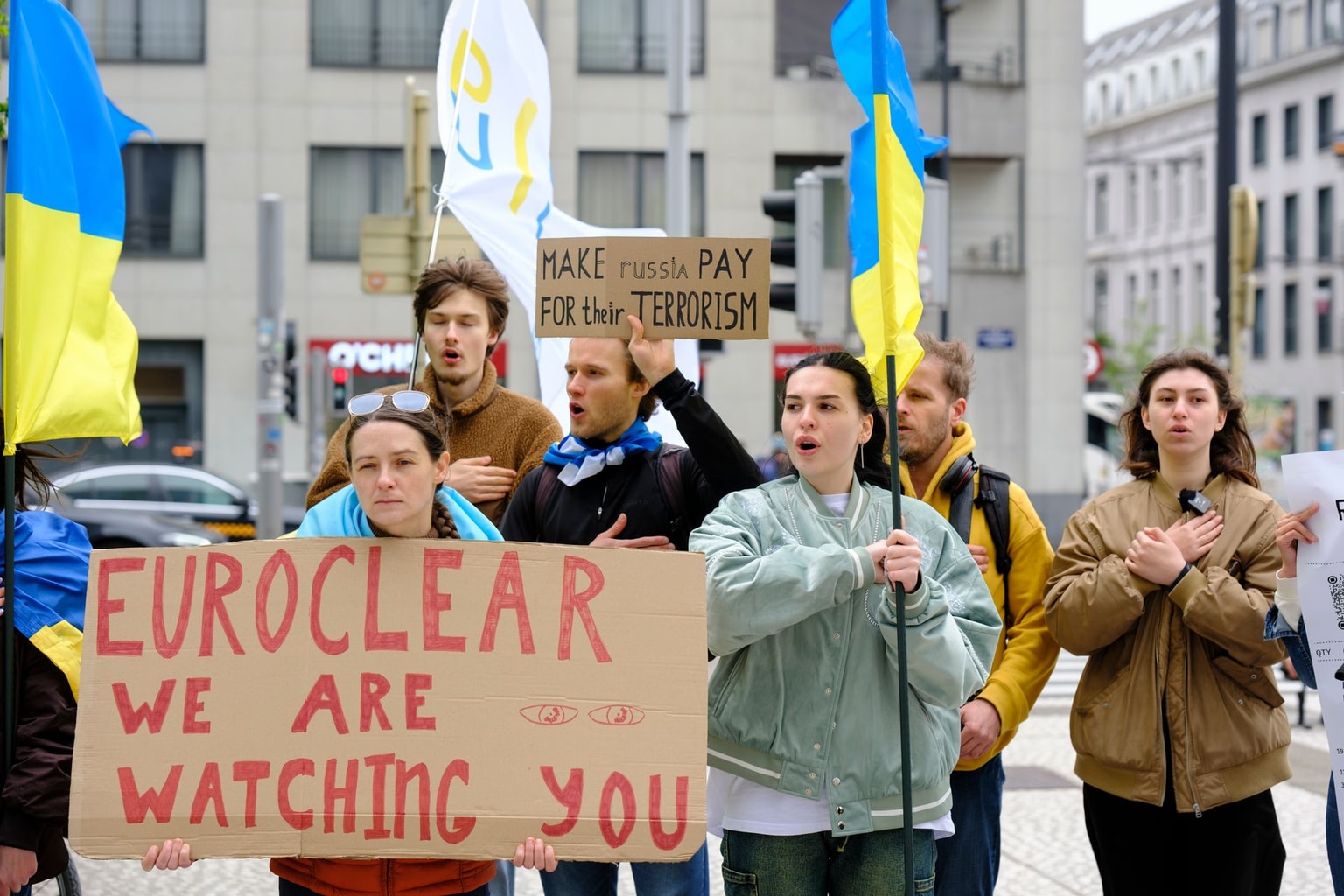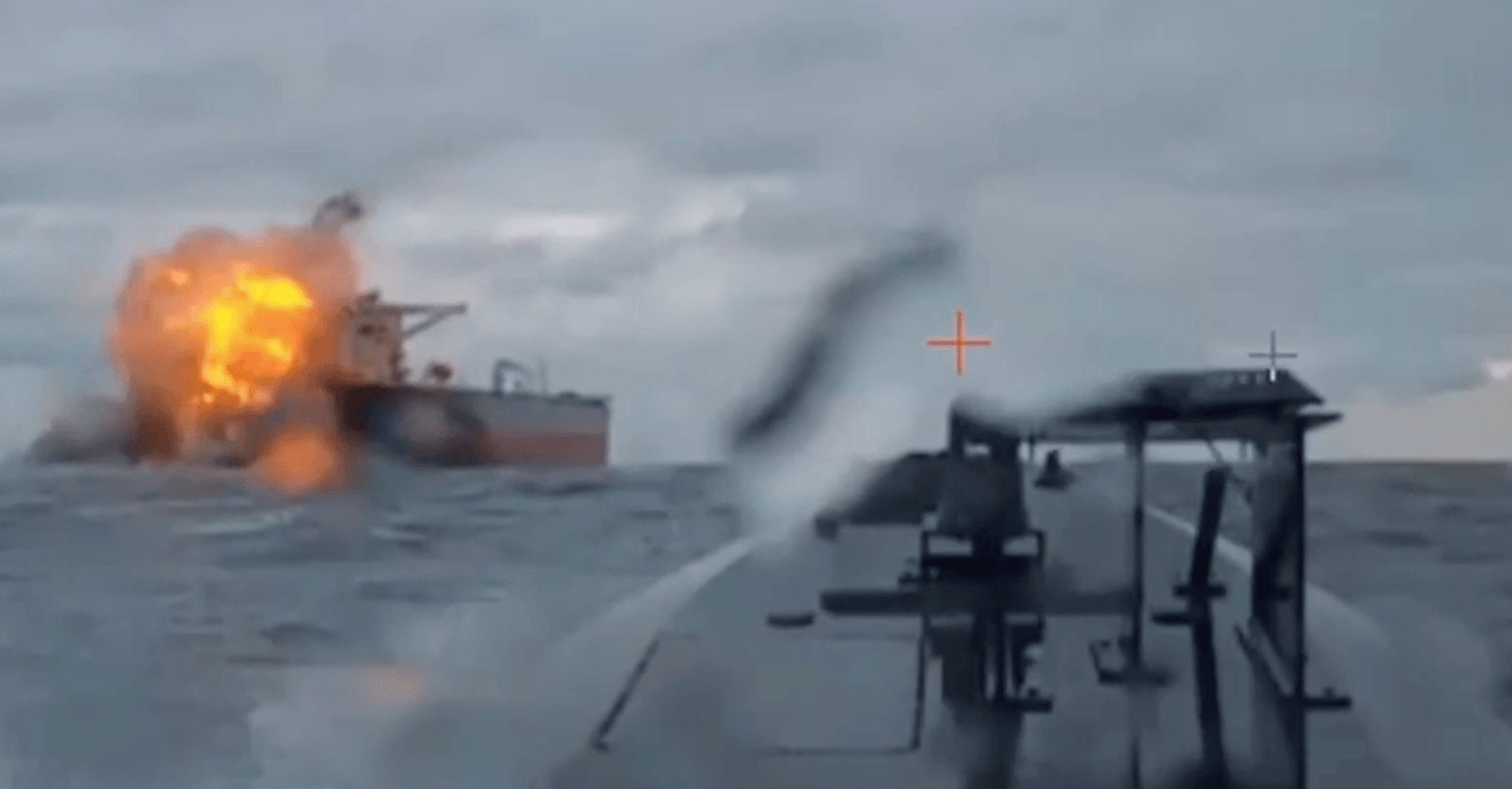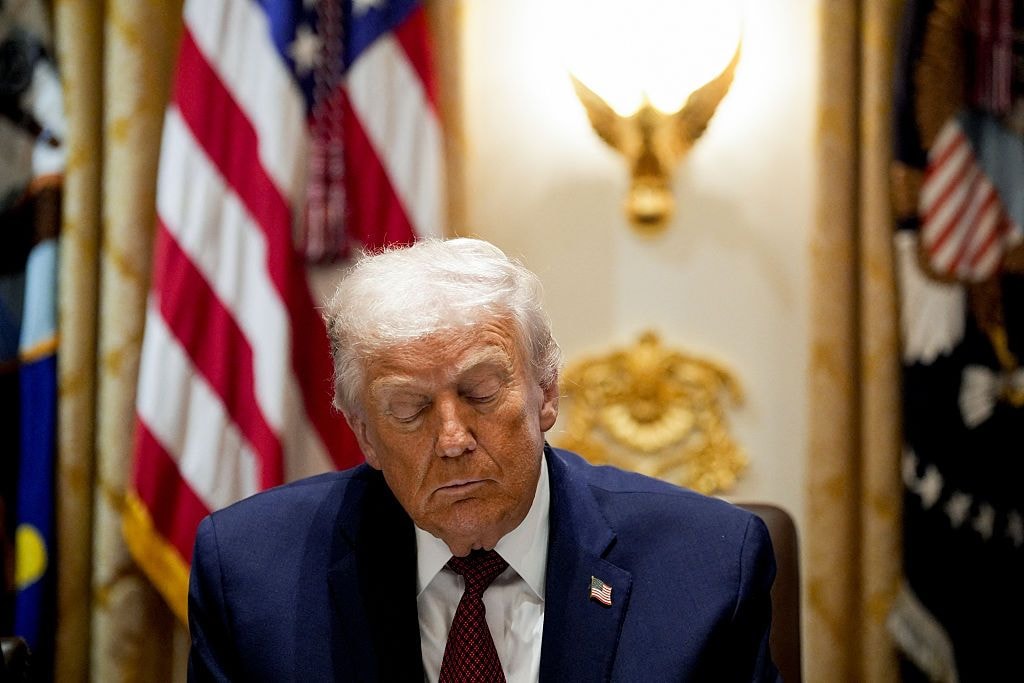Center for Defense Strategies: Can Ukraine really be invaded? Scenarios for a Russian attack (analysis)

Editor’s Note: This is an analysis by experts from the Center for Defense Strategies: Andriy Zagorodnyuk, Alina Frolova, Oleksiy Pavliuchyk, and Viktor Kevlyuk. It was originally published in Ukrainian by Ukrainska Pravda on Feb. 12. The Kyiv Independent has translated it and is republishing it with permission.
On Feb. 11, reports from U.S. officials of a possible large-scale Russian offensive in the coming days added to the tense news cycle.
The officials even named the date of a possible offensive – Feb. 16. The U.S. and more than 20 other countries are urging their citizens to leave Ukraine.
So does this mean the attack is inevitable, and what are the real risks? What to do, and how to interpret this flood of reports?
Let's analyze the current situation and the positions of the involved parties to draw conclusions and make cautious forecasts. In this article, we will provide a brief analysis of the following issues:
- General operational situation around Ukraine
- The most and least likely scenarios
- The situation in the Black and Azov Seas
- Defending Kyiv
- Readiness of security and defense forces
- Rationale behind the statements of the world leaders
- What to do now?
Current situation around Ukraine
As of Feb. 12, the total number of Russian troops along Ukraine’s borders, including those in Belarus and in the occupied territories of eastern Ukraine and Crimea is 87 battalion-tactical groups - about 147,000 service personnel. This figure includes air and naval personnel.
These troops are equipped with the appropriate weapons and vehicles, as well as logistical and medical support units. However, so far there are no signs that they have the additional reinforcements needed for a large-scale offensive. A joint command and control system has been established and is functioning in both Belarus and Russia.
Russian forces are actively carrying out operational and combat training activities. Joint drills of the Armed Forces of Russia and Belarus, named “Allied Determination 2022," are currently underway. They are scheduled to end on Feb. 20.
About 15 Russian battalion tactical groups and other units are in Belarus. Additionally, troops of the Eastern Military District (VO) of Russia have been deployed to Belarus, including units of Russia’s 103rd Missile Brigade, armed with the Iskander short-range ballistic system.
In recent weeks, the combat readiness of Russian units stationed on the border with Ukraine has increased significantly. The possible reasons include drills, an intimidation operation, or preparing to start an actual military operation.
Most and least likely scenarios
The strength of Russian forces near the border, including those stationed on the territory of Belarus, does not exceed previous predictions. We previously discussed the possibility of the Russian Armed Forces near the borders of Ukraine swelling to 160,000, but currently the total number does not exceed 150,000.
At present, the accumulated forces on the border are insufficient for a large-scale operation aimed at capturing all or a significant part of Ukraine. Therefore, predictions about the probability of such scenarios in the near future cannot be confirmed.
Moreover, we believe that such scenarios are unlikely in the foreseeable future due to the factors we have described in our previous article. In short, there is currently no active action in Russia to prepare the hundreds of thousands of troops needed for such a large-scale offensive.
At the moment, there are also no significant measures to create strategic reserves and mobilization on the basis of the Russian army’s centers for mobilization deployment.
In addition, such an operation will have extremely negative consequences for Russia. If the formula for a failed attack on Ukraine includes non-military components, international isolation and sanctions, the outcome of such an operation will be catastrophic for all of Russia, not just the Kremlin.
We also believe that most local scenarios to capture separate cities and territories are unlikely due to a lack of political expediency. At the same time, some hostilities in certain areas are possible in order to distract Ukraine's defense forces.
We continue to believe that the scenarios of massive bombing and missile strikes, which could lead to large-scale civilian casualties, are unrealistic. Such actions could thwart Russia's political leadership's plans to win the "hearts and minds" of Ukraine's Russian-speaking population. As a result, even his few sympathizers may lose their desire for hypothetical support for Putin in Ukraine.
However, individual missile and air strikes on military or infrastructure facilities are possible only as a means of supporting ground operations or as a means of psychological pressure.
At the same time, the Kremlin's attempt to organize a trigger event - a planned provocation, for example, in eastern Ukraine - remains plausible. The purpose of these actions is to legitimize the entry of Russian troops into the territory of Ukraine or an armed escalation on the front line. In general, the aggravation in eastern Ukraine is highly probable.
Scenarios of various kinds of hybrid invasion without a military component remain high in many areas due to misinformation, political turmoil, undermining of trust and physical actions – terrorist attacks, sabotage operations, cyber attacks on critical infrastructure.
Overall, we believe that the general assessment of the scenarios has not changed compared to our assessment three and two weeks ago.
A separate question is the likelihood of a potential attack on Kyiv. We will address this issue below, after assessing the situation in our seas.
Black and Azov seas
The situation in the Black Sea continues to change due to the strengthening of the capabilities of the Russian Black Sea Fleet by ships of the Pacific and Northern Fleets.
Since February 9, there are 12 large landing ships in the Black Sea from all fleets of the Russian Federation. It is estimated that two brigades of marines with military equipment can be loaded onto these landing ships. It is also estimated that up to 4,000 troops and up to 250 armored vehicles may pose a threat of landing on the Black Sea coast of Ukraine, in particular in the Kherson region.
Together with airmobile and airborne troops concentrated in Crimea, this could pose a threat of Russian operations in southern Ukraine.
Using the significant military advantage at sea and in violation of international law, Russia will carry out an almost complete blockade of the Black Sea, and probably the Azov Sea, from 13 to 19 February under the pretext of training in combat fire.
This provocation is a test of Russia's capabilities and the consequences of such actions. These actions, as well as the possibility of forming a landing force, will be a distraction to stretch the attention of both the military and political leadership of Ukraine and the international community.
So far, the forecast for the development of the situation in the Black and Azov Seas is negative, but it will very much depend on the reaction of Ukraine and, especially, the international community to the blockade. If the world does not react harshly to such a provocation, it is only a matter of time before it is repeated.
Defending Kyiv
Today, most of the attention is focused on the prospects of Kyiv’s defense.
It is clear that for Kremlin strategists, the key goal of aggression is to regain full control over Ukraine. It will look easier to them if they capture the capital.
Indeed, Russian military units on the territory of Belarus, together with troops on the territory of the Russian Federation, pose a threat to the northern regions of Ukraine and Kyiv. The number of forces and means is theoretically sufficient for the implementation of the "Kyiv scenario". But only theoretically.
In the event of an attempt to break through the border in Chernihiv, Zhytomyr and Kyiv oblasts, Russian troops will suffer huge losses. This scenario looks too risky for Russia, considering the current situation.
First, the scenario of capturing Kyiv, both in terms of material and human losses, is not a "more budget-friendly" version of a full-scale invasion, given the quantity and quality of troops and resources involved in defending the Ukrainian capital.
To capture communications nodes – airports, railway stations, bridges – Russia needs to use its tactical airborne troops from the assault units of its armed forces, which can be neutralized by the existing security and defense forces of Ukraine. But even these actions don’t make sense without the movement of Russia’s National Guard and general military units to maintain the occupied territory.
Such an offensive will be very slow, as it will be necessary to get through the multi-level defense of the Northern Operational Command, 100 km from the border. These troops are ready to counter.
Second, gaining control of a metropolis with a population of more than 3 million people, many of whom are ready to resist the enemy, is a difficult and unrealistic task, given the required number of troops, which is currently not observed near the border.
In addition, Kyiv is very difficult to isolate due to its complex topography, and it will be joined by resistance groups from all over Ukraine. This will make it impossible for the enemy to hold the capital for a long time and, accordingly, strongly influence the expediency of the decision to attempt an offensive.
Third, hopes for support for Russia's offensive by a domestic "fifth column" are in vain – this is not 2014. Ukraine already knows what to do with Kremlin allies professionally, firmly, and quickly. In addition, after the occupation of Crimea and the blockade of temporarily occupied territories in Donbas, Russia has deprived itself of the opportunity to supply "mobilization resources" in the form of paid pro-Russian thugs. Moscow's mouthpieces do not have the advantages they had 8 years ago.
Fourth, only strategists with an authoritarian mindset can count on the benefits of capturing Kyiv. In fact, a democratic Ukraine will be able to survive even if the capital is seized. Any potential "puppet" government will not be recognized by Ukrainians or the world. It is futile to suggest that having captured Kyiv, the Russian Federation will establish control over Ukraine.
But the main thing is – any scenarios of capturing Kyiv, both in general and with the use of "special operations", will not be unexpected.
Readiness of the security and defense forces of Ukraine
Ukraine is currently ready to defend the country and Kyiv. In preparation for this article, we spoke to a large number of officials and can confirm that none of them are ignoring the invasion threat. Attempts to further push into the territory of Ukraine will be met with significant resistance from our forces.
According to our estimates, the level of Ukraine’s readiness has increased significantly in recent times.
First, the level of armament has increased significantly, including through recently received weaponry from allies.
Second, some Ukrainian troops have been redeployed closer to the Belarusian border, and we could see the training of units in the country’s northern regions.
Third, large-scale exercises are currently taking place in Ukraine, the aim of which is precisely to coordinate actions in case of any invasion scenario. Ukraine’s troops are currently in a state of increased combat readiness.
All this confirms that Ukraine’s military and political leadership takes potential threats seriously and works to counter them. In addition, the newly-created Territorial Defense Force has recently begun to be actively deployed and trained.
Of course, we can’t talk about the maximum readiness of territorial defense units, but tens of thousands of people are ready to resist, both morally and physically. They know what to do in an emergency and will act in concert.
Details about training have been provided in a joint statement of the Minister of Defense and the Commander-in-Chief of the Armed Forces.
This level of preparation indicates that the implementation of any of the above scenarios, and especially the capture of Kyiv, has become much more difficult for Russia.
If such an operation is attempted, they will have significant problems with the movement of heavy equipment – thanks to the warm weather and mud, and the number of losses will certainly be visible to the general public, including Russians, thanks to social networks.
Whether Russians are ready to see pictures of burning vehicles and bear hundreds or thousands of dead compatriots is a rhetorical question.
The popularity of Russia’s ruling elite is periodically declining, and support for the "necessity" of war with Ukraine by Russian citizens is consistently low due to the "fear of a great war." In addition, "hellish" sanctions will be activated immediately, and assistance to Ukraine will be intensified. The presence of such sanctions will create, inter alia, preconditions for inter-elite conflicts in Russia.
All these factors make the scenario of an attack on Kyiv unlikely.
Rationale for the statements of world leaders
Why, then, are U.S. officials warning of an imminent invasion?
First, among Russia's many intentions may be operational plans for an offensive with various scenarios, including on Kyiv. Russia could use these plans in the event of an absence of unity of the Ukrainian population, unpreparedness of the defense forces, and/or lack of international support.
Russia is constantly adjusting and adapting its plans based on the changing situation, the reaction of Ukraine and the international community.
Let us not forget that we are in a state of hybrid warfare, in which information narratives are part of an attack or defense. Obviously, our Western partners see the disclosure of information about the intentions of the Russian leadership as an opportunity for pressure and restraint: we know about your plans and are preparing for them.
Intercepting the Kremlin's initiative for the next steps and the absolute and unshakable rejection of the idea of starting a large-scale war, and Western readiness to enforce punitive consequences – this is what’s holding Putin back.
What should the civilian population do in these conditions?
Our willingness to resist, our composure, and lack of panic play a significant role. Sometimes such things decide the course of history. So far, we are seeing a good reaction from the population. No panic.
Polling data consistently indicates the inadmissibility of any potential occupation and readiness to resist among the people, even under such a severe wave of negative news.
To the private sector and businesses that want to help – you can always do so by responding to the call of the Command of the Territorial Defense Forces. They need help. Don’t delay, if you have this possibility.
It is important to stay calm and collected. It is important to participate in civil defense activities. We must prepare for the possible self-defense of neighborhoods and streets, and watch out for provocateurs.
Ukrainians are proving to themselves, and to the world, a serious and determined readiness to defend themselves. This is the key element of a successful resistance strategy.










